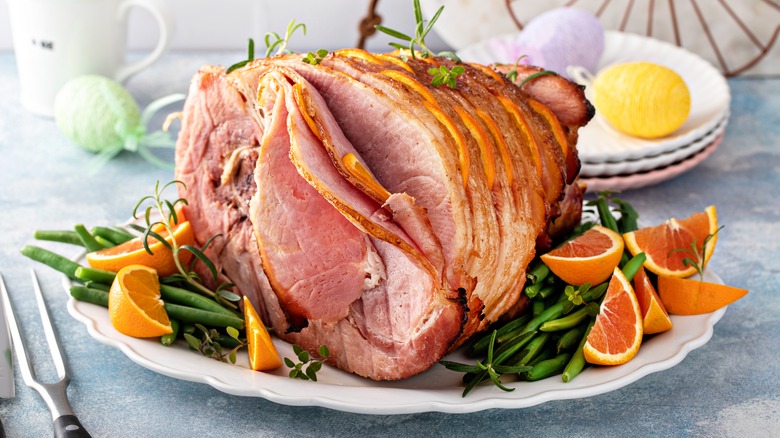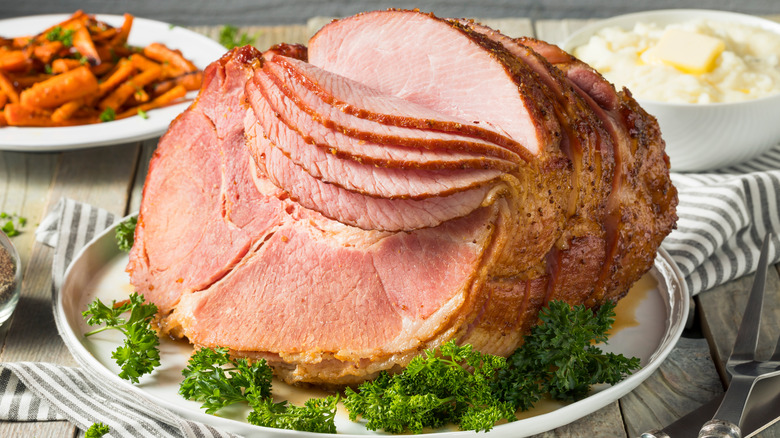The Reason You Should Never Bake Ham Uncovered
There are so many myths and half-truths floating around the world of cooking, which can make it almost impossible to know how important certain processes are — even when some people swear by them. There are some steps in preparing a good meal that just can't be skipped though, and keeping your ham covered while it bakes is one of them.
According to S.Clyde Weaver, ham can be a bit confusing. In terms of butchering, it refers to the hind leg of a pig. But there are a ton of different ways for ham to be prepared: It can be cured, smoked, or salted for different flavors. There are also different parts of the ham, such as the ham hock, that add another layer to the seemingly simple meat. And as The Kitchn points out, when most folks refer to a ham — especially to enjoy during the holidays or at a big family gathering – they're referring to a cured city ham. Those are the bone-in, smoked, and often spiraled form of the classic pork cut.
Now that we've cleared up what we talk about when we talk about ham, why is it so important to keep it covered?
Covering ham keeps it from drying out
According to The Kitchn, baking a ham without keeping it covered is one of the worst mistakes you can make. Livestrong points out that most hams are sold pre-cooked. That means when you're putting yours in the oven, all you're doing is reheating it. The best method is to warm it slowly at a low temperature because of the density of the meat. The problem with this is that prolonged exposure to the dry air of the oven will dry your ham out and leave you with an unappetizing slab. Certain cuts of pork are already considered fairly lean, and certain sections like the tenderloin are especially prone to dry out.
Luckily, there's a simple solution to this problem. The Kitchn explains that the best way to keep ham from drying out in the oven is to simply cover it with some aluminum foil or place it in a baking bag. This will trap any moisture as it evaporates and prevent the ham from drying out. Bon Appétit also recommends keeping a half-cup of water, wine, or broth in the base of the roasting pan to add some more moisture to the mix. Once your ham has reached an internal temperature of 120 degrees Fahrenheit you can remove the covering, apply your glaze, and turn up the heat (via The Kitchn). The glaze will help protect your ham, and as it caramelizes in the heat, it will add tons of flavor as well.

